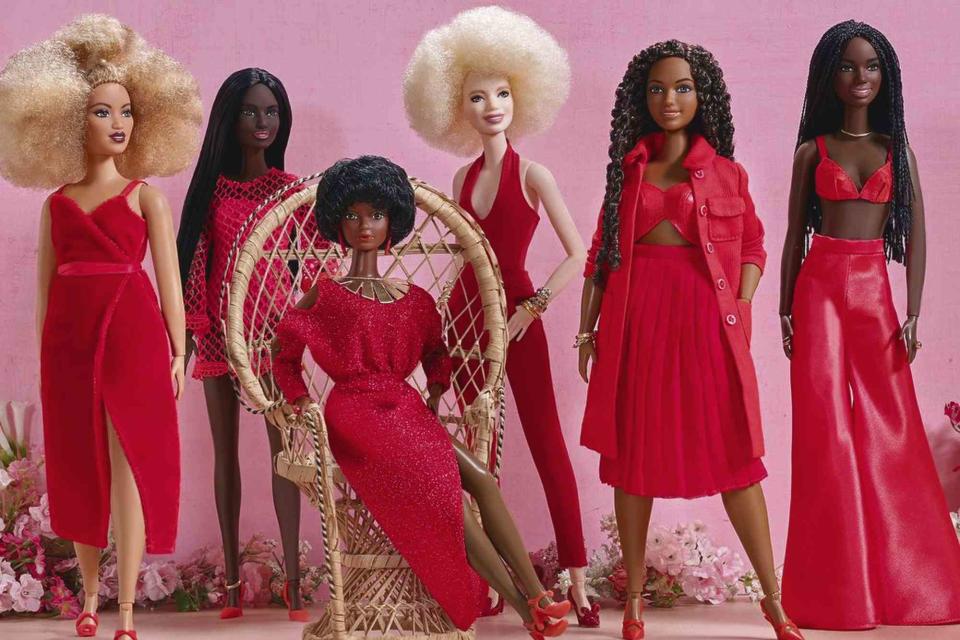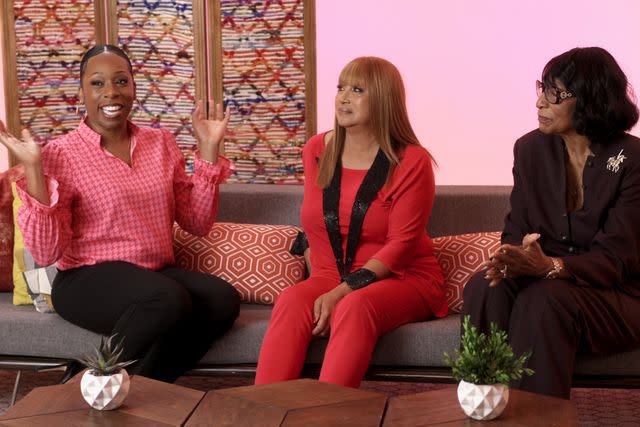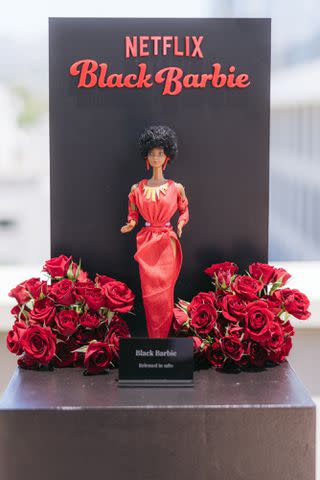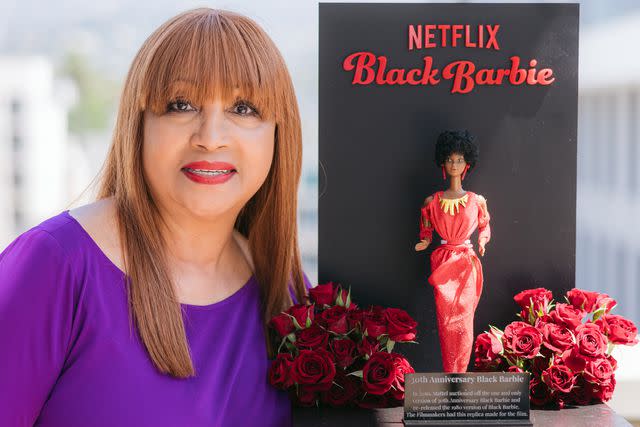Doll Designers Say First Black Barbie ‘Opened a Lot of Doors’ for Inclusivity in Toys: Mattel ‘Trusted’ Us (Exclusive)
In 'Black Barbie,' designers Kitty Black Perkins and Stacey McBride-Irby talk the evolution of the dolls and further tell PEOPLE about the differences they've made

Courtesy of Netflix
Black BarbiesWhen the very first Black Barbie landed on store shelves in 1980, she was revolutionary.
Up until this point, very few Black dolls were available for children, and at Mattel, Barbie had always been white with blonde hair. Sure, there were Black dolls who were friends of Barbie — including Christie, who was released in 1968, nine years after Barbie first launched.
Those early Black dolls by Mattel, however, were only "accessories" to Barbie herself, Kitty Black Perkins, a former doll designer at Mattel tells PEOPLE exclusively, much like how Ken is still just an accessory to Barbie.
And these dolls simply couldn't be called "Barbie." There was only one Barbie.
That all changed thanks to the help of a few pivotal Mattel employees who passionately told the powers that be that little Black girls deserved to have Black Barbies.

Courtesy of Netflix
Former Mattel employees Stacey McBride-Irby, Kitty Black Perkis and Beulah Mae Mitchell in 'Black Barbie'Related: Venus Williams Made into a Barbie Doll for Mattel’s New Campaign: ‘Honored to Be Recognized’
In Black Barbie, a new Netflix documentary available to stream now, writer and director Lagueria Davis sits down with her great aunt Beulah Mae Mitchell — a former Mattel employee who worked on the assembly line before working her way up to the office. Mitchell once asked Barbie creator Ruth Handler why there was no Black Barbie. Her question — and her continued questioning — kept the conversation alive long enough for the company to finally start the process of designing the first Black Barbie in 1979, by the hands of Kitty Black Perkins.
"When I walked in the door at Mattel, there was always a talk about doing a Black doll," she tells PEOPLE exclusively. "This took on a life of its own, and I think that the right person was listening because the VP of marketing at that time, his name was Steve Nelson, and he came to me and he said, 'Kitty, what do you think about us actually doing a Black Barbie?' And I told him, 'I think it's absolutely fantastic, and we've been wanting to do that for years.' And he said, 'Well, I think it's about time.'
Perkins says from concept to release, it took about a year, because the team wanted the doll to be just right. Previous Black dolls didn't necessarily take facial features or hair into consideration, and Perkins did, which made this doll extra special.
"We came up with the idea of making the nose a little bit wider, the lips a little bit fuller, the body a little shapelier and, of course, the hair a little bit shorter," she says. "We went back and forth with the hair because we wanted to make sure that we were not cutting out a major play pattern, because with the kids, one of the main play patterns with Barbie is styling and combining the hair. When the hair is short, we weren't able to do that. But we included a hair pick [with the doll]."
The PEOPLE Puzzler crossword is here! How quickly can you solve it? Play now!

Courtesy of Netflix
The original Black BarbieRelated: See the First Official Barbie Dreamhouse for $4 - and How Her Luxe Digs Have Evolved Over the Years
Perkins also took inspiration from pop culture for the look and admits that she modeled the doll a bit after herself. She further tells PEOPLE that she thought of Black Barbie as herself and she dressed her as such.
"I gave her bold jewelry. Diana Ross was my inspiration on the fashion, so I gave her something that Diana Ross would wear if she were on stage performing," she says. "Bob Mackie was Diana Ross' designer at the time, so I took a lot of inspiration from him. It was fantastic. It was something that every day when I walked into Mattel and I was able to work on that doll was like playing. It was not like work, it was playing."
Once Black Barbie hit shelves in 1980, she opened the door for more and more Black Barbies to be created — many at the hands of Perkins, who designed for Mattel until she retired. During her tenure at the company, she also brought on designer Stacey McBride-Irby, who shares in the documentary how she cold-called Perkins for a job because she was such a fan of her work and wanted to be a part of her legacy with Barbie.
Never miss a story — sign up for PEOPLE's free daily newsletter to stay up to date on the best of what PEOPLE has to offer, from juicy celebrity news to compelling human interest stories.

Courtesy of Netflix
Kitty Black Perkins with Black BarbieRelated: 8 Things You Never Knew About Barbie's Wardrobe, According to the People Who Dress Her (Exclusive)
Mattel has continued to release Black Barbies since 1980, as shown in Black Barbie. Black Barbies were released in tandem with white Barbies for many editions, but there were also some limited-edition Black dolls that were their own launch — including the Alpha Kappa Alpha sorority Barbie that McBride-Irby designed. There were also Black History Month dolls, the launch of Brooklyn Roberts and McBride-Irby's creation of the So in Style group of Black dolls.
What the designers both quickly realized is that the 1980 Black Barbie set a new way of thinking in motion for Mattel. The Black doll was no longer just an accessory — she was her own entity and should be treated as such.
"[Previously,] when we would start with a doll, we would always create the white Barbie first, and then marketing would tell us, 'Okay, we need a Black Barbie to go along with it," McBride-Irby tells PEOPLE. "When I wanted to create the So in Style line of dolls, I wanted to make sure that the African-American doll was represented throughout the whole line. I didn't want Mattel to miss the mark. Fortunately they jumped onto my story and they trusted me and the team. We had a Mattel African-American Forum at the time, and we had a team of people creating the full story of the So In Style line of dolls."
Perkins and McBride-Irby both feel like Barbie has evolved beautifully over the years — and she continues to get more inclusive. Not only does she have more skin tones and body shapes than ever, but she is doing more jobs than ever before too.
"I feel like definitely the Black Barbie has evolved," McBride-Irby says. "More multicultural dolls are in play, too."
"I think Barbie is stronger than ever, and I think that Black Barbie is just taking off," Perkins adds.
Black Barbie is streaming on Netflix now.
For more People news, make sure to sign up for our newsletter!
Read the original article on People.

 Yahoo Lifestyle
Yahoo Lifestyle 
